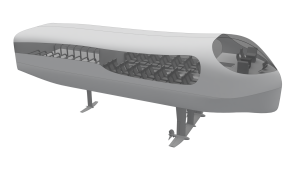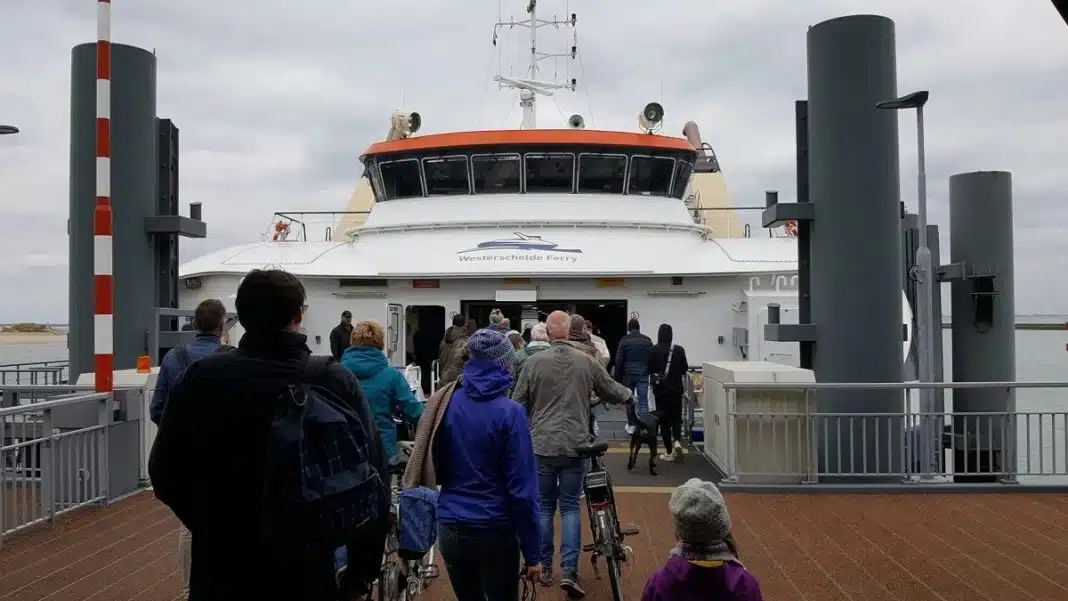Imagine this: a ferry service provides an essential connection for commuters. In the summertime, it also gets a lot of tourist use, which has determined the original size of the vessels. In reality, this means that during the off-season, the ferry only has around 10% of its capacity used. Plus, while the vessels are required to be able to operate during stormy weather, this type of vessel requires a lot of fuel. Combined – the ferry service is currently operating at a loss.
While local government ensures that the ferry service keeps running, there’s a desire to do things differently. The above, combined with the aim to sail emission-free, was put before Flying Fish, MuConsult, Panteia, and C-Job Naval Architects.
Curious to discover how to solve this ‘problem’? The answer may surprise you. Read the interview with project partners below:
The situation above describes quite a conundrum. How would you describe the situation?
Johan Schonebaum, Senior Project Manager and Co-Founder of Flying Fish, says: “The province of Zeeland requested us to look at the Westerschelde Ferry operations. The ferry runs between Vlissingen and Breskens. Their aim is to have the ferry service run completely emission-free while preparing the fleet for an increase in passengers using the service. A benefit would be if we could also reduce the OPEX”

Looking at the current situation, what are some of the key takeaways that guided the research and, ultimately, the solution?
Roeland Pieper, Senior Consultant at MuConsult, says: “It’s important to first start with what numbers of passengers we may expect. Currently, 80% of passengers using the ferry service are tourists. At its lowest, only 10% of capacity is used during the off-season. This already provides key data, so we build upon that.
“We used demographic, socio-economic and tourist trends to estimate the anticipated development of the number, type, and distribution of passengers throughout the day in the period 2027 to 2042.”
Schonebaum adds: “Based on the numbers provided by MuConsult and Panteia, it became clear there was an opportunity to optimize operations in addition to replacing the current vessels. Simply replacing the existing ones with two new vessels would still pose the same problem – it would run nearly empty outside of the summer months, while operational cost would remain the same.”
It is clear that a change is needed to optimize the service between Vlissingen and Breskens. What did the consortium propose?
Schonebaum says: “Our solution is a flexible service. To respond efficiently to the peaks and lows of the ferry service, a mixed fleet of three small, fast ships and one large ship is ideal – all battery-electric. This is a big contrast to the two large ships running on fossil fuel that currently operate.
“It allows the ferry service to make the most of the conditions as they present themselves while reducing operating costs across the board.”

The fleet proposed is quite a change to the current set-up. What kind of vessels do you propose?
Eefje Pouls, Junior Project Manager at C-Job Naval Architects, explains “For the main vessel we propose a lightweight catamaran, for example made of aluminium, which would have a capacity of 250 passengers. The smaller ships are proposed to be high-speed hydrofoil vessels. These ships could reach speeds of 50 km/h and have space for 42 passengers. Two are required to maintain the ferry service, a third is proposed to support during downtime or maintenance of the other vessels.
“All vessels are battery-electric and would be able to charge while offloading and loading passengers onboard. Thanks to the higher speeds, more journeys are possible thus passengers would enjoy a quicker journey and increased service.”
More vessels than the current service sounds as if it would be an expensive solution, is it?
Menno Menist, Director at Panteia, says: “This challenge is often seen in many transport and mobility solutions. The question is how to make the transition to zero-emission a reality? Since this question is crucial for the success of the Green Deal, the EC has made co-financing funds available to cover the initial (temporary) losses. With the proposed set-up, the Province of Zeeland could apply for subsidies considering the fleet would be emission-free. This would tackle (part of) the initial losses”
Schonebaum sums up: “The unique proposal for a zero-emission fleet features higher energy efficiency, a more flexible and reliable schedule with lower investment and operating costs, and contributing to cleaner maritime transportation. In short, the new set-up leads to a higher service level and lower cost. A win-win situation for both passengers and local government.”












